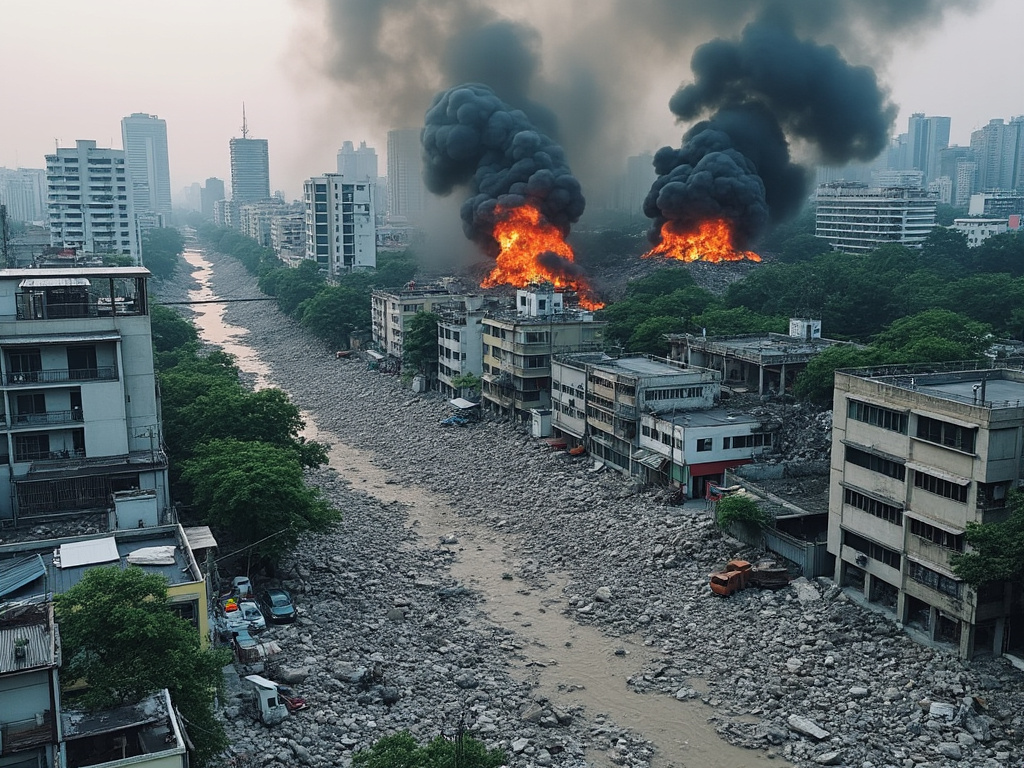
Deployment of advanced missile systems and unmanned vehicles marks a significant military collaboration to counter China's influence.
The United States has announced the deployment of new military equipment to the Philippines as part of efforts to strengthen defense collaborations in the face of regional tensions with China.
This announcement coincided with a visit by US Defense Secretary Pete Hegseth to Manila, where he met with Philippine Defense Chief Gilberto Teodoro Jnr.
The deployment includes NMesis (Navy-Marine Expeditionary Ship Interdiction System) anti-ship missiles and unmanned surface vehicles (USVs), which are set to be introduced during next month’s Balikatan exercises involving US and Philippine forces.
In his statements, Hegseth emphasized that these advanced systems would enhance the capabilities of both the US military and the Armed Forces of the Philippines in defending the nation's sovereignty.
"Our ironclad alliance demonstrates our commitment to countering aggressive actions from the Communist Party of China in the region," he asserted.
Teodoro voiced strong support for the deployment, highlighting its potential to accelerate the integration of modern technologies within the Philippine military and improve preparedness for future deterrence needs.
During his visit, Hegseth also engaged with Philippine President Ferdinand Marcos Jnr.
and reiterated the importance of mutual defense cooperation against perceived threats from China.
He articulated a perspective on maintaining peace necessitating preparation for potential conflict, a theme he underscored multiple times throughout his discussions.
In a related development, Indian Prime Minister Narendra Modi's upcoming visit to Sri Lanka is noted as a strategic maneuver by India to counteract China's growing influence in the region.
Modi and Sri Lankan President Anura Kumara Dissanayake are expected to finalize a pivotal defense pact and other agreements aimed at enhancing bilateral relations.
The negotiations follow discussions initiated when Dissanayake visited India in December.
The agreement is anticipated to encompass collaborations in various sectors, including solar power, textiles, pharmaceuticals, and information technology, alongside defense-related arrangements.
Reports indicate that the military cooperation will involve joint maritime surveillance, exercises, and support for military equipment between India and Sri Lanka.
Modi's visit marks the first time a foreign leader has been hosted by Dissanayake since his inauguration last September, and analysts view the move as significant in the context of escalating competition between India and China for influence in South Asia.
Experts point out that strengthening ties with Sri Lanka is crucial for India in the face of China's expanding footprint in the region.
This announcement coincided with a visit by US Defense Secretary Pete Hegseth to Manila, where he met with Philippine Defense Chief Gilberto Teodoro Jnr.
The deployment includes NMesis (Navy-Marine Expeditionary Ship Interdiction System) anti-ship missiles and unmanned surface vehicles (USVs), which are set to be introduced during next month’s Balikatan exercises involving US and Philippine forces.
In his statements, Hegseth emphasized that these advanced systems would enhance the capabilities of both the US military and the Armed Forces of the Philippines in defending the nation's sovereignty.
"Our ironclad alliance demonstrates our commitment to countering aggressive actions from the Communist Party of China in the region," he asserted.
Teodoro voiced strong support for the deployment, highlighting its potential to accelerate the integration of modern technologies within the Philippine military and improve preparedness for future deterrence needs.
During his visit, Hegseth also engaged with Philippine President Ferdinand Marcos Jnr.
and reiterated the importance of mutual defense cooperation against perceived threats from China.
He articulated a perspective on maintaining peace necessitating preparation for potential conflict, a theme he underscored multiple times throughout his discussions.
In a related development, Indian Prime Minister Narendra Modi's upcoming visit to Sri Lanka is noted as a strategic maneuver by India to counteract China's growing influence in the region.
Modi and Sri Lankan President Anura Kumara Dissanayake are expected to finalize a pivotal defense pact and other agreements aimed at enhancing bilateral relations.
The negotiations follow discussions initiated when Dissanayake visited India in December.
The agreement is anticipated to encompass collaborations in various sectors, including solar power, textiles, pharmaceuticals, and information technology, alongside defense-related arrangements.
Reports indicate that the military cooperation will involve joint maritime surveillance, exercises, and support for military equipment between India and Sri Lanka.
Modi's visit marks the first time a foreign leader has been hosted by Dissanayake since his inauguration last September, and analysts view the move as significant in the context of escalating competition between India and China for influence in South Asia.
Experts point out that strengthening ties with Sri Lanka is crucial for India in the face of China's expanding footprint in the region.





































